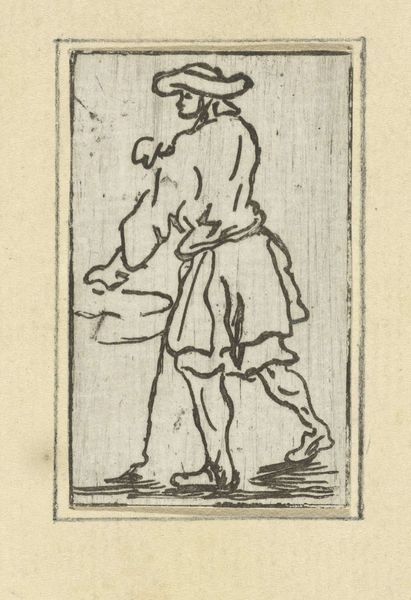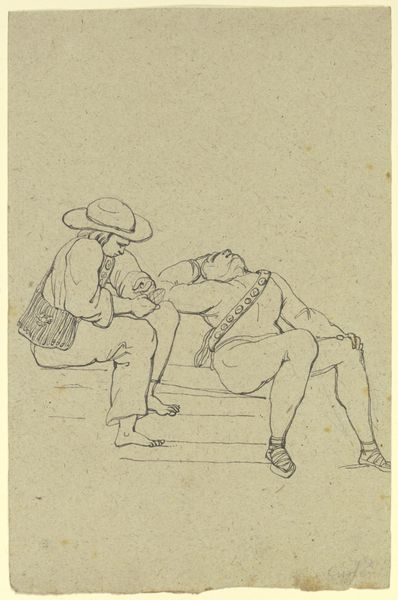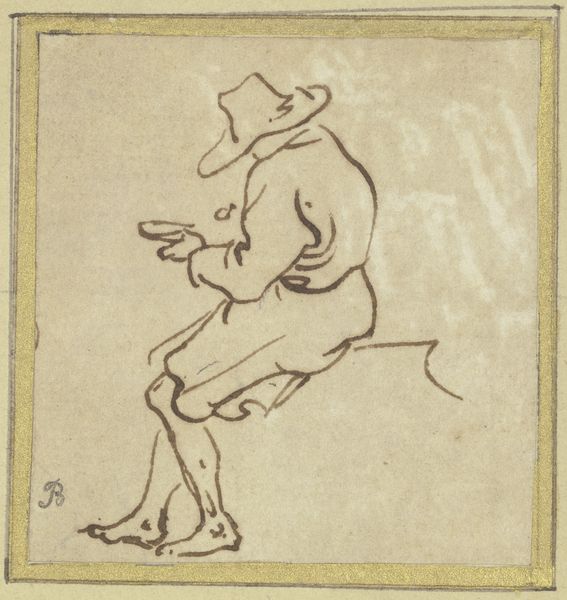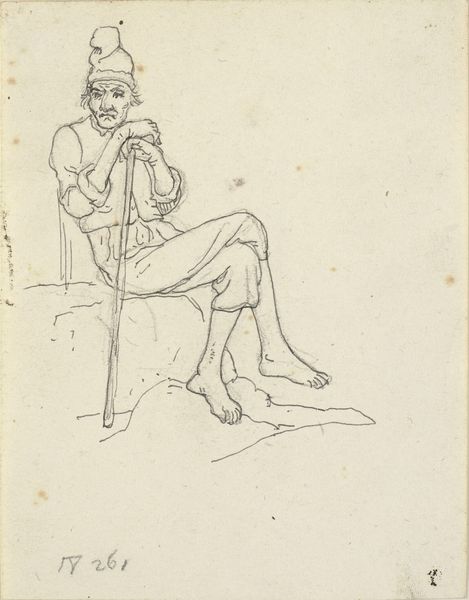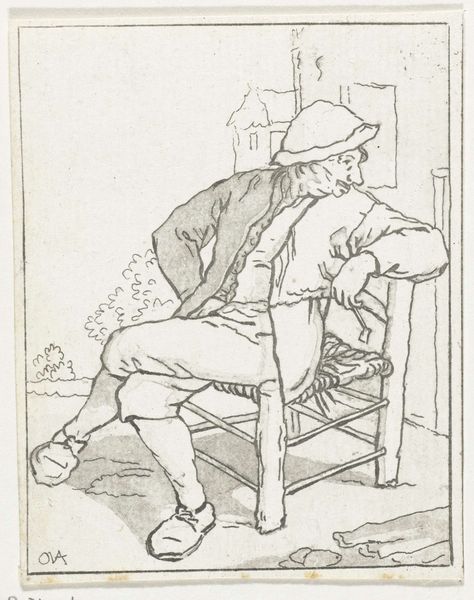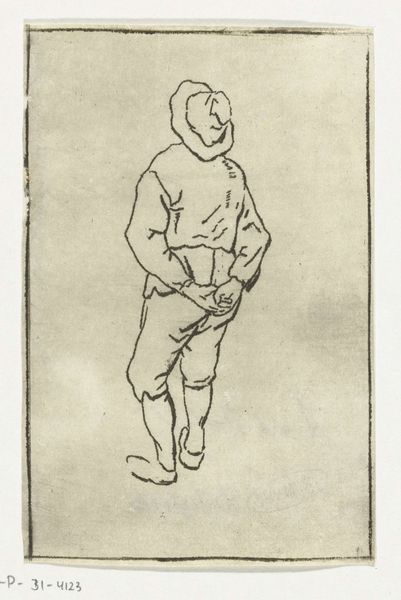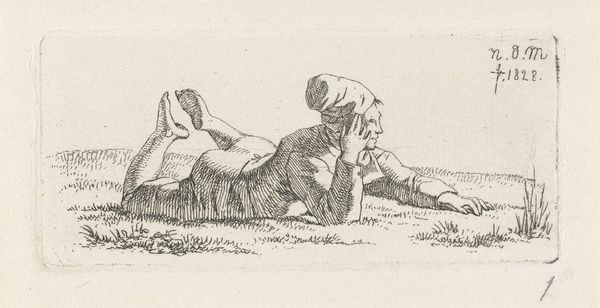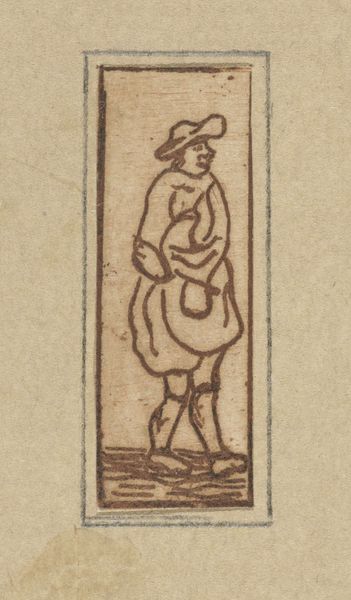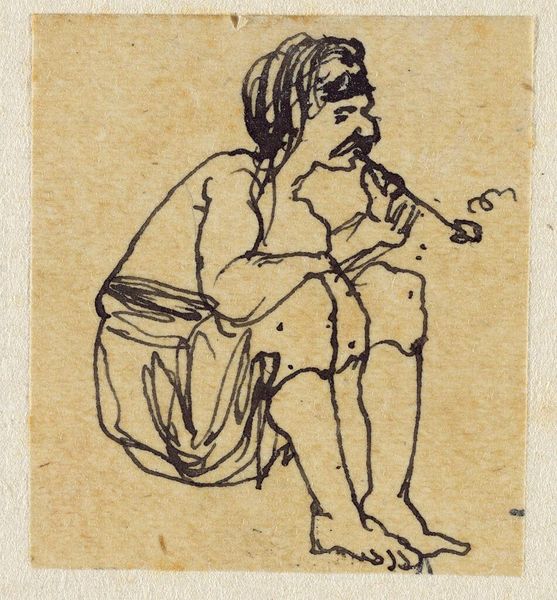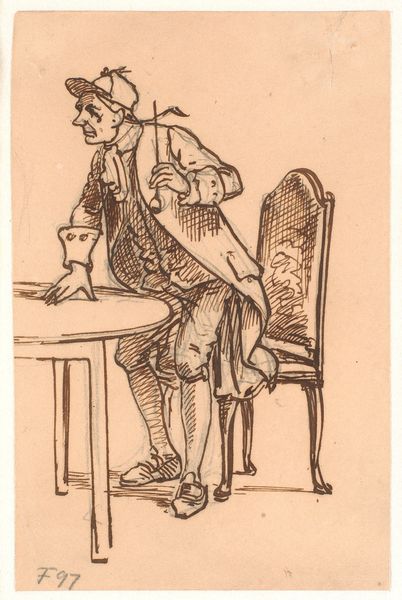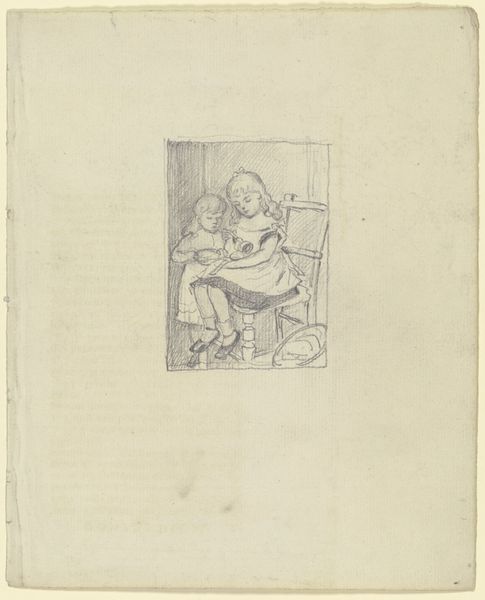
drawing, ink, pen
#
portrait
#
drawing
#
figuration
#
ink
#
romanticism
#
pen
#
genre-painting
Dimensions: height 88 mm, width 72 mm
Copyright: Rijks Museum: Open Domain
Curator: Ah, another little marvel. This ink and pen drawing, attributed to Vincent van der Vinne van Lee who lived between 1808 and 1876, is called "Jongen op een prikslee" which translates to "Boy on a Sleigh". It’s delightfully simple, don't you think? Editor: Simple, yes, but powerful in its directness. The roughness of the pen strokes—I wonder what kind of nib he used—give the image a sort of restless energy, even though the boy is just sitting there. The cheap ink also seems pretty deteriorated, giving the impression that we're looking at something from an excavated memory. Curator: I love that you mention memory, because it feels like a snapshot from someone's childhood. There's an almost wistful quality to his expression. It makes me think of crisp winter days and the joyful abandon of youth. The image's roughness resonates a raw authenticity that really pulls me in. Editor: I'm stuck on the materiality of it, actually. Ink drawings like these were rapidly reproducible through new technologies, suggesting this artwork, though seemingly handmade, could also function like proto-mass media of sorts, and thus a consumer good in and of itself. Curator: That's a fascinating perspective. Thinking of it as an early form of accessible art makes the experience all the more intimate. I feel like I’m holding a little piece of history, an artifact democratizing art way back when. Editor: Absolutely. The accessibility is crucial to understanding the work. The lines that seem 'naive' could in fact denote its quick fabrication in a growing visual market. Where and how were these drawings sold, and to whom? Did they reinforce or question prevailing norms about winter pastimes or even about child labor, since he's likely traveling somewhere for his chores, not play? Curator: So you’re saying its meaning could lie in its function as accessible art in its time and socio-economic class... Editor: Exactly! And what it meant for labor, commodity, artmaking, class and consumption itself! This modest little drawing contains within it such an expansive vision. Curator: It’s beautiful to consider the multiple lives this artwork can have! To be so firmly in the past, but with an echoing voice in today's age. Thank you for sharing your lens. Editor: And thank you—art like this truly benefits from many interpretations.
Comments
No comments
Be the first to comment and join the conversation on the ultimate creative platform.
